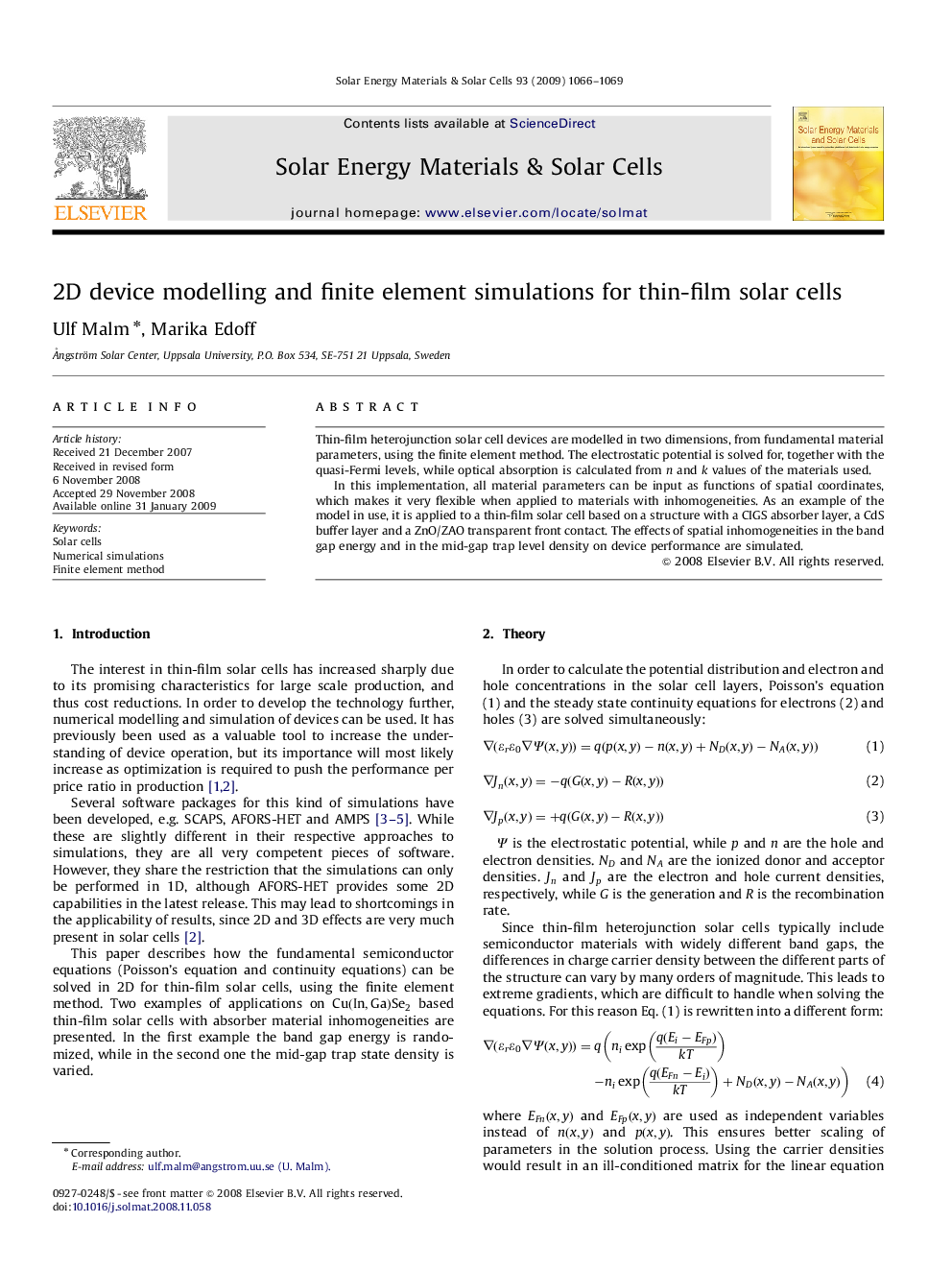| Article ID | Journal | Published Year | Pages | File Type |
|---|---|---|---|---|
| 80016 | Solar Energy Materials and Solar Cells | 2009 | 4 Pages |
Thin-film heterojunction solar cell devices are modelled in two dimensions, from fundamental material parameters, using the finite element method. The electrostatic potential is solved for, together with the quasi-Fermi levels, while optical absorption is calculated from nn and kk values of the materials used.In this implementation, all material parameters can be input as functions of spatial coordinates, which makes it very flexible when applied to materials with inhomogeneities. As an example of the model in use, it is applied to a thin-film solar cell based on a structure with a CIGS absorber layer, a CdS buffer layer and a ZnO/ZAO transparent front contact. The effects of spatial inhomogeneities in the band gap energy and in the mid-gap trap level density on device performance are simulated.
